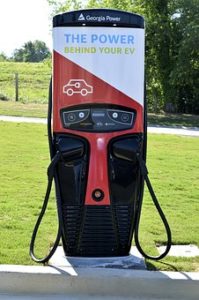The topped-up cells in electric car batteries mean each of these batteries should retain their charge-discharging capacity for as much as 100,000-to-200,000 miles. In other words, the battery can easily outlive your vehicle. However, they can pollute the environment and cause unimaginable health challenges if disposed of improperly. So, what will happen to all the dead batteries for the electric cars out there?
Used to Power other Valuable Electric Devices
Even when lithium-ion batteries are no longer useful in electric cars, they retain approximately 80% of their charge capacity. Some of the batteries that we consider dead can enjoy a second life and serve us in several ways for over ten years more. In other words, these batteries have a second life after the 100,000-to-200, 000 plus miles on the road. Of course, they can become obsolete after some years.
Some of the common uses of EV batteries are:
- Power manufacturing plants
- Used to store power on a large scale
- Used to store energy in the home and workplace
If you have a renewable energy source such as a solar panel, you can use it to store the static energy that you need to power your systems conveniently at no additional cost.
Be Dismantled and Treated
 EV batteries can be dismantled and treated to protect the environment.
EV batteries can be dismantled and treated to protect the environment.
Before deciding whether to dismantle EV batteries or not, experts need to assess the packs, modules, and cells to determine issues such as how long they can still hold a charge. Assessing the amount of stored energy is particularly important for safety and economic reasons during the dismantling process.
Depending on the outcome of the evaluation, you could choose to dismantle the battery by hand. This poses some challenges due to the batteries’ heavyweight and high voltages. So, we will need specialized insulation tools and qualified mechanics to operate them.
In countries with extremely high labor costs, the manual dismantling process will likely not make economic sense. This shows that we will also need automated disassembly techniques to dismantle some of the dead batteries. Other than economic reasons, automation is necessary for eliminating the danger factor. It could also be the best means to enhance the segregated materials’ purity.
However, due to the design diversity of electric batteries and other similar features, robots may not crack most of them. Perhaps, this will lead to the manufacture of lithium-ion electric batteries with designs that allow for standardized automation.
As you can see, the process of dismantling EV batteries remains complex, leaving experts speculating what will happen at this stage. However, with the current advancements in technology and the high demand for EV cars, this task will be most likely achievable with ease soon.
Be Recycled
No one should ever imagine the possibility of dumping EV batteries in landfills due to the associated economic and environmental costs. It could cost a lot financially. Besides, the batteries can explode and release a dangerous chemical into the atmosphere. Dismantling and treating the remains is a viable option. However, it may deny the industry the opportunity to manufacture new EV batteries at an affordable cost and use advanced methods to protect the environment. So, one of the best solutions is to devise suitable ways to recycle these batteries.
Recycling facilities will be able to sort out manganese, copper, cobalt, nickel, and others. They are needed for manufacturing new EV batteries.
Efficient recycling techniques are required to make lithium-ion batteries safer than any other alternative.
Wrapping Up
Now you can see that dead batteries for electric cars can pose great economic and environmental challenges to the world. However, we can reduce the risks by reusing most of these batteries and recycling them. Treating some of the dangerous chemicals is another great option. Overall, all the dead batteries will be treated, reused, and ultimately recycled in the safest environment where everyone is safe. If this doesn’t happen, the batteries could become a threat to the inhabitants of the earth.












